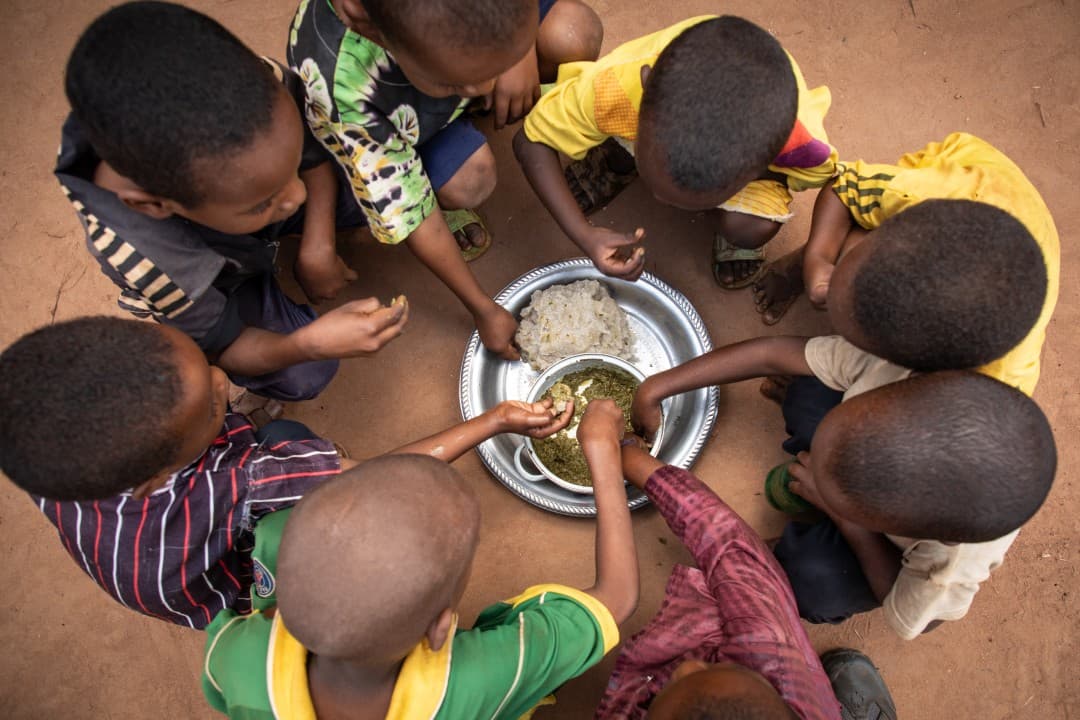Loading News Article...
We're loading the full news article for you. This includes the article content, images, author information, and related articles.
We're loading the full news article for you. This includes the article content, images, author information, and related articles.
As Kenya marks World Food Day, collaborative efforts between government, private sector, and communities are crucial to addressing persistent food insecurity and malnutrition, which affect millions across the nation.

Kenya joined the global community on Thursday, October 16, 2025, to observe World Food Day under the theme “Hand in Hand for Better Foods and a Better Future.” The theme underscores the critical role of partnerships in building resilient and sustainable food systems. Events across the country, including in Vihiga County, showcased local innovations and emphasised community-driven agricultural initiatives as vital for achieving food security.
County Executive Committee Member for Agriculture, Livestock and Fisheries in Vihiga, Julius Maruja, highlighted the importance of local innovation and affordable, nutritious, and locally produced food. This year's observance comes as Kenya continues to grapple with significant food security challenges, with millions facing acute food insecurity.
Food security has been a persistent challenge for Kenya, despite agriculture being the backbone of its economy. The sector contributes over 20% to the Gross Domestic Product (GDP) and employs more than 40% of the total population. Historically, the government has implemented various policies to achieve food self-sufficiency, with a national food policy paper published in 1981 making wide-ranging recommendations on pricing, marketing, and access to credit.
However, global disruptions, including climate change, have exacerbated food insecurity. The country has experienced severe droughts followed by heavy rains and flooding, impacting agricultural output, particularly in arid and semi-arid lands (ASALs) which constitute 80% of Kenya's landmass.
The Kenyan government is actively reviewing its National Food and Nutrition Security Policy, adopting a multi-stakeholder approach that includes UN agencies, academia, non-governmental organisations, and various government ministries. This revised policy aims to align with Kenya's existing food systems pathways, which focus on youth and women's access to resources, digital agricultural solutions, diversified diets, and climate action.
Initiatives under the government's Big Four Agenda also prioritise food and nutrition security through efforts to reduce food costs, enhance large-scale production, and boost smallholder productivity. The Agricultural Sector Transformation and Growth Strategy (ASGTS) further outlines a 10-year plan to reform the sector, aiming to increase farmer incomes and ensure household resilience.
The success of food security initiatives heavily relies on the active participation of various stakeholders. Farmers, women's groups, and youth associations are at the forefront of implementing innovative agricultural practices. In Vihiga County, for instance, these groups showcased traditional vegetables, fruits, livestock, vertical gardens, and irrigation systems, demonstrating climate-smart and resource-efficient farming.
Organisations like Kenchic are also contributing by producing quality poultry products locally to bridge the nutrition gap and make balanced diets more accessible. The World Food Programme (WFP) supports national and county governments in strengthening safety nets and nutrition action plans, and invests in long-term initiatives to build community resilience against climate shocks.
Kenya faces a significant food insecurity burden. In 2023, approximately 39.4 million Kenyans experienced uncertainty regarding access to adequate food. Latest data from February 2023 indicated that around 4.4 million people in ASAL areas were facing high levels of acute food insecurity (IPC AFI Phase 3 or above), with projections suggesting this could worsen to 5.4 million people between March and June 2023.
Malnutrition remains a critical concern, with 18% of children under five stunted, 5% wasted, and 10% underweight. Additionally, Kenya loses at least KSh 72 billion annually due to food waste and post-harvest losses, with 20% lost at the farm level and 60% at the marketing stage, according to a 2020 FAO and USAID report.
Climate change poses a significant risk to Kenya's food security, with erratic weather patterns directly impacting agricultural productivity. The decline in livestock prices coupled with increasing cereal prices has also deteriorated the terms of trade for pastoralists. Economic pressures, including rising public debt and global market fluctuations, further complicate efforts to achieve sustainable food systems.
Kenya is a net importer of agricultural products, with food imports accounting for 18.82% of merchandise imports in 2023. Major import partners for food products in 2022 included Egypt, India, Mauritius, Uganda, and South Africa.
While Kenya has robust policy frameworks and ambitious plans for food security, the challenge often lies in effective implementation and ensuring these policies translate into tangible improvements for vulnerable populations. The 2022 Global Hunger Index (GHI) report ranked Kenya 94th out of 121 countries, indicating that despite commitments, progress in reducing hunger has been limited.
The effectiveness of interventions, such as the lifting of the ban on genetically modified crops, remains a subject of ongoing discussion, with calls for evidence-based policy decisions rather than reactive measures.
The review of Kenya's National Food and Nutrition Security Policy is expected to conclude by November 2024, with presidential assent anticipated in October 2024. This revised policy aims to provide a unified approach to food systems transformation.
Moving forward, the focus will remain on strengthening public-private partnerships to unlock opportunities in areas such as cold-chain infrastructure, farmer financing, and nutrition education. The continued adoption of climate-smart agriculture and diversification into fruits and vegetables will be crucial for building resilience.
Keep the conversation in one place—threads here stay linked to the story and in the forums.
Other hot threads
E-sports and Gaming Community in Kenya
Active 6 months ago
Popular Recreational Activities Across Counties
Active 6 months ago
The Role of Technology in Modern Agriculture (AgriTech)
Active 6 months ago
Investing in Youth Sports Development Programs
Active 6 months ago